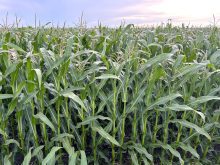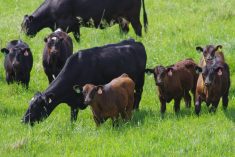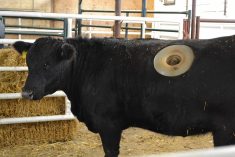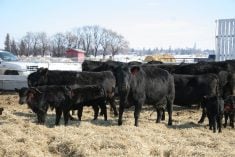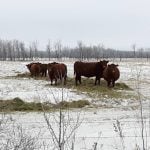As producers busy themselves with spring calving, the Canadian cattle herd continues to shrink.
Read Also
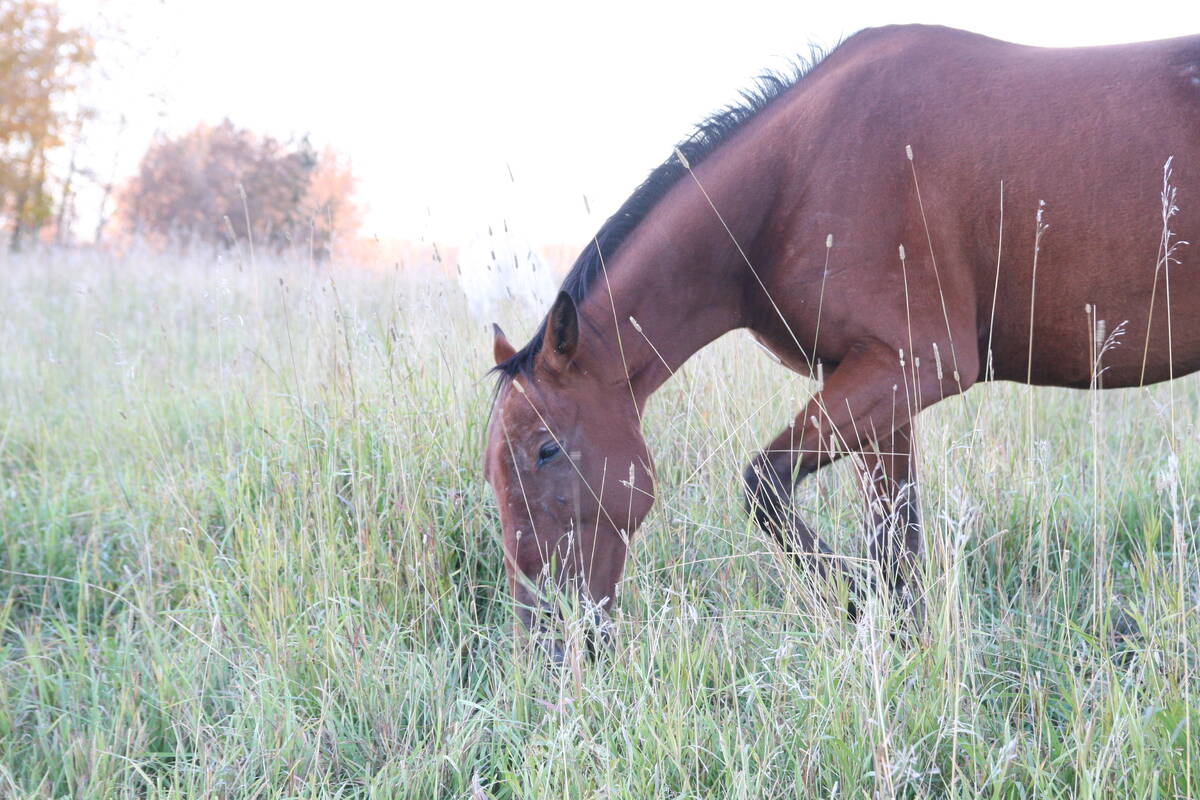
Beware giving horses too much iron
Horses consuming too much iron through diet or well water risk health problems like laminitis. Mineral testing forage and water is good practice for owners.

“Cattle supplies are getting smaller. They have in Canada for many years, and now the United States is into its third year of liquidation as well,” said Anne Wasko, market analyst for Gateway Livestock Services who also ranches in Saskatchewan.
On Jan. 1, there were 3.5 million cows in the Canadian beef breeding herd (1.4 million of them in Alberta) — yet another low in what has been a steady decline since the 2005 peak of 5.4 million head.
The flip side is that since cattle numbers are smaller, there’s anticipation that prices will rise.
“They are stronger today than a year ago, and there are expectations for that to continue to occur as we go through this year, and into the next,” said Wasko.
But there is a big but — record-high feed costs because of last year’s drought and the fear that many producers could get walloped again.
“The drought is foremost in many of our minds,” she said. “There’s a chunk of southern Alberta and southern Saskatchewan that is still under severe drought conditions. And over half the United States is in a drought state as well.
“That, in itself, brings a lot of concern of what this season is going to be like in terms of pasture conditions. Will we have the ability to grow crop which we didn’t have last year?”
Higher costs are affecting just about every sector in the Canadian, and global, economy but cattle producers are feeling especially squeezed, said Wasko.
“Every time we turn around, there are higher costs. It’s easy for me to talk about better calf prices, but at the end of the day, that doesn’t mean real strong margins.”
That raises the prospect that more producers may decide to exit the industry.
“That could become entirely possible in the condition of drought,” said Wasko. “It could be somebody else forcing the decision, like a banker. When an operation is not profitable, they might not have many choices.
“The industry has been in a downsizing mode for a long time, and issues in front of Canadian cattle producers don’t bode well for stopping that.”
In other words, 2022 will not be the year to start rebuilding the herd despite higher prices.
As of the end of March, cow slaughter was up four per cent. But it’s difficult to know whether that’s driven by the pull of the market, worries about another dry year, or the fact that many pastures have been seriously knocked back because producers had no choice but to graze them longer because feed was so expensive or hard to come by.
“You don’t know what is going on behind each individual coffee table,” said Wasko.
Another factor that could have a major bearing on herd numbers is that land values have soared in recent years and that might prompt some to throw in the towel and sell, she said.

Size matters
The possibility of further downsizing raises a larger issue: Can the Canadian cattle industry still function and maintain its infrastructure, including packing plants, with a smaller herd?
“For the last 2-1/2 years, we have supplemented the smaller cow herd and calf crop with U.S. feeder cattle imports,” said Wasko. “I wonder though, how sustainable is that in the future? The U.S. cow herd was big, and they had more calves on the ground and available to move to outside markets.”
However, that’s changing.
By next year, the American cattle herd will be two million head smaller than in 2019, which will impact the number of calves born, she said.
“I wonder how feasible it is to import feeder cattle,” said Wasko. “We’ve imported all the corn to go along with them, this past year. Does this really make sense on the long haul?
“I question it. I understand why this happened over the past couple of years, but to suggest that this is going to be what sustains cattle in Canada? Maybe I am missing something. It is still going to be economics that allows whether those feeder cattle go north or south.
“Right now, with the costs and the difference between the United States and here… I just wonder how that works down the road.”
According to forecasts from CattleFax (the American beef industry information agency), cattle prices in the United States will rise, she noted.
“As the cow herd shrinks in the U.S., these cattle prices will increase in step. Whether that will be enough and timely enough to offset those higher costs, those will be the questions we will look for answers to this year.”
Eyeing an exit?
Global beef demand is high, but that money is not coming back to producers’ pockets, she said.
Colin Campbell also fears rising costs will push some producers out of the industry.
“You don’t have to go very far to figure out that costs are rising because of fuel prices,” said Campbell, who ranches near Bon Accord.
“As much as cattle do a lot of their own grazing here in Alberta, you have fuel costs that impact the transportation of animals, and the transportation of feed and the costs of repairs. They’ve all gone up.”
Campbell, a former director with the Alberta Beef Producers, notes that cattle producers across the country are aging. At one time, the average age of a cattle producer was 55, and he thinks it might be close to 60 by now.
“Young guys are coming in, but there are guys leaving, and the guys who remain in it are getting older,” he said.
As well, some cattle producers may be tempted to go into grains and oilseeds because prices for those commodities are so high, he said.
And the financial punishment dished out by the drought was severe, said Campbell.
“You can get yourself into a hole, and all of a sudden, you’ve got $100,000 debt and it takes you five or six years to pay it off,” he said.
“I was told as a kid that you never feed cows through a drought, and I’m going to follow that. I would recommend that anybody who is short of feed, that you tailor your herd to the size of your feed pile.”
That said, some will do more than just downsize for a year, he added.
“But at a certain point, you just decide, ‘Well, I’m not feeding cows. I’ll sell them all,’” said Campbell.
“And that’s going to happen. If you’re 65 and the cows are gone, I don’t think you’re going to rebuild the cow herd.”





